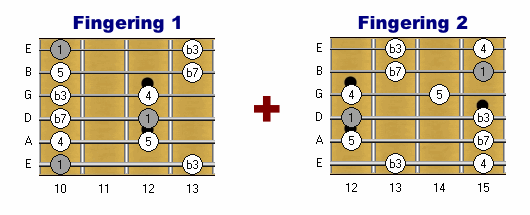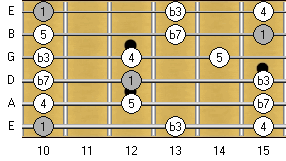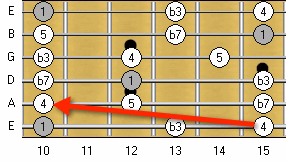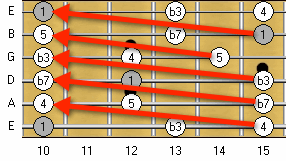In my opinion, the minor pentatonic scale is the most important scale that you need to master for rock guitar. Why? Because there is an absolutely vast number of rock guitar licks that use it. I personally can’t imagine trying to improvise in a rock style without inserting at least a few tasty minor pentatonic ideas into my solos. 🙂
Even though the minor pentatonic scale is really vital to know, it’s often surprising to me that some rock guitarists don’t take the time to explore it fully. They just learn the five two-note-per-string box patterns, and don’t move beyond them.
While the traditional methods of playing the minor pentatonic scale are fantastic, and you should definitely learn them, I thought it would be fun in this guitar lesson to show you another approach to playing this wonderful scale. So let’s jump right in and take a look at it…
Understanding Unison Minor Pentatonic Fingerings
Probably the best way of explaining this method of fingering is with a specific example. So let’s work out a unison fingering for the D Minor Pentatonic scale…

Now that we’ve chosen a scale, let’s now create a unison minor pentatonic fingering by joining two traditional fingerings together. For this example we’ll be joining Fingering 1 and Fingering 2 together…

It would be a great idea to play through both of these fingerings now. Once you’ve done that, then check out how the unison fingering would look…
Unison Fingering 1

You might be wondering why I call this a unison fingering. Well, to answer that we need to take a closer look at the fingering…

If you were to play through the first four notes of the unison fingering shown above, then you would need to do the following…
- Play the 10th fret on the thick E-string.
- Play the 13th fret on the thick E-string.
- Play the 15th fret on the thick E-string.
- Play the 10th fret on the A-string.
I recommend playing through these four notes now. If you do that, then you’ll notice that the third and fourth notes you play are exactly the same pitch. (This is why I’ve drawn an arrow on the fretboard diagram between those two notes).
In music, two notes that are exactly the same pitch are referred to as a unison interval. If you were to continue playing through the fingering, then this unison interval happens each time there is a string change. Here’s the same scale fingering with all the unison intervals shown with arrows…

I must admit that I don’t particularly like the sound of the fingering when it’s played just as a scale. (The unisons sound weird to me—especially when the scale fingering is played at slow speeds). For this reason, I don’t tend to play the fingering in a straight up-and-down fashion. Instead, what I like to do is use the unison fingering as a tool for coming up with new minor pentatonic licks.
Let’s take a look at an example lick that is based around the fingering that we’ve just talked about…
An Example Guitar Lick
Example Lick: D Minor Pentatonic

Hopefully you can see from this example lick, that the unison fingering makes it easy to play musical ideas that wouldn’t be possible using traditional minor pentatonic fingerings. Although you don’t need to learn the lick, it would be a really good idea to analyse it so that you can see how I’ve used the notes from the unison fingering. Once you’ve done this, you could then try coming up with some monster pentatonic licks of your own! 🙂
A Few Last Words
I hope you enjoyed this guitar lesson. If you invest some serious time into learning and experimenting with what we’ve just talked about, I have no doubt that it will open you up to many new soloing possibilities.
Have fun with this stuff!
Return To: Guitar Fretboard Knowledge Lessons